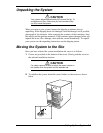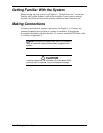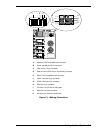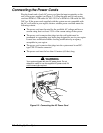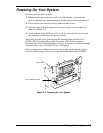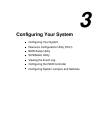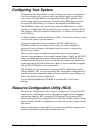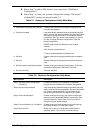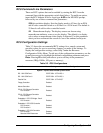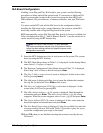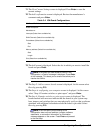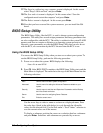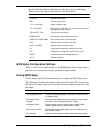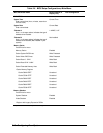
Configuring Your System 3-3
The RCU stores the configuration information in the non-volatile memory on
your system. When you exit the RCU, the configuration information is written
to non-volatile memory. The RCU also maintains the Setup configuration,
which is stored in the battery-backed memory. This means that when you exit
the RCU, the Setup and RCU configuration agree with each other.
Using the RCU
If you are adding a non-Plug and Play ISA option board, run the RCU before
installing the board using procedures found in the Upgrades and Options
chapter of this guide. If you are upgrading system memory, do so before running
the RCU using procedures found in the Upgrades and Options chapter of this
guide. Use the RCU as follows.
Note:
The system can fail following improper
configuration. Always save the current settings before
reconfiguring the system.
1. Power on the system.
2. If the diskette drive is disabled, enable it using the BIOS Setup utility,
explained later (see BIOS Setup Utility). Specify the correct type of diskette
drive.
3. Using the E
XPRESS
B
UILDER
CD-ROM, create the RCU diskette. Note that the
CD-ROM refers to the RCU as the SCU.
4. Start the RCU by rebooting the system, with the RCU diskette in Drive A.
When the RCU banner is displayed, press
Enter
and the Resource
Configuration Utility Main Menu shown in Table 3-1 displays.
5. Select Learn about configuring your computer from the RCU Main Menu
and press
Enter
if you need information on system configuration. Read
through the information and press the
F10
key when you are done.
6. Using the
up
and
down
arrows, highlight Configure Computer and press
Enter
. The Resource Configuration Utility Menu shown in Table 3-2
displays. The keys that are active while viewing a screen are displayed on
the bottom of the screen.
Note:
Press the
F1
key at any time for help and
additional information on each option. To return from help,
press
ESC
.
7. Select Step 1: Important System Configuration information and press
Enter
to learn more about the Resource Configuration Utility.



